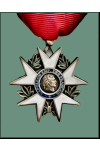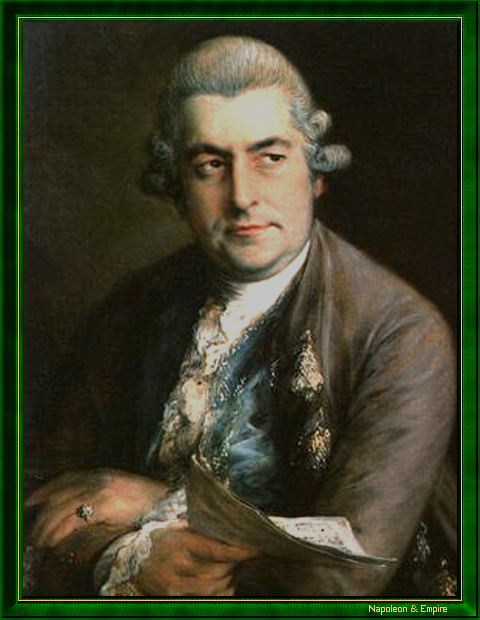Giovanni Paisiello
Knight of the Legion of Honor and the Royal Order of the Two Sicilies

Giovanni Paisiello was born on May 9, 1741 in Roccaforzata, near Taranto in Apulia. At the age of fourteen, he was sent to Naples , where he was taught by Francesco Durante. He performed his first operas in various Italian cities, then returned to Naples in 1766 to establish his supremacy.
In 1776, he was called to Russia by Catherine II (Екатери́на II Алексе́евна), where he remained for eight years. It was in St. Petersburg [Санкт-Петербу́рг], in 1782, that his most famous work, The Barber of Seville, based on Pierre Augustin Caron de Beaumarchais, was premiered.
On his return to Naples in 1784, King Ferdinand IV appointed him Kapellmeister. He gave La Molinara (1788), a work from which Ludwig van Beethoven drew two themes for piano variations.
In 1797, he won a competition among Italian musicians for a funeral march in honor of General Lazare Hoche, and in 1799 became director of the national music when Naples became the Parthenopean Republic. This did not prevent him from returning to favor with the Bourbons when they regained their throne a few months later.
The First Consul Napoleon Bonaparte, for whom Paisiello was a favorite composer, borrowed him from the King of Naples and brought him to Paris in April 1802, appointing him Kapellmeister of the Tuileries and giving him complete control over the organization of his music. Paisiello's Proserpine was a complete flop, but his Messe and Te Deum with double choir for the Emperor's coronation were particularly successful.
French composers, led by Etienne Méhul, made life difficult for him, however, and in 1804 he preferred to return to his native country, leaving his estate to Jean-François Lesueur. His opera Il Pirro was nevertheless performed to great acclaim at the Théâtre de l'Impératrice in Paris in 1811.
His career continued in Naples , where he worked for successive sovereigns, Joseph Bonaparte and Joachim Murat. It came to an end in 1815, when the Bourbons were less delighted than fifteen years earlier to find him back in Naples. Paisiello fell into disgrace and died on June 5, 1816, before he could re-establish his position.
He rests in the church of Santa Maria Donnalbina [40.84449, 14.25265] in Naples.
"Giovanni Paisiello au clavicorde" painted in 1791 by Elisabeth-Louise Vigée Le Brun (Paris 1755 - Paris 1842).

His instrumental output was small, as was his religious output, but he composed over a hundred operas, both seria and buffa. It is in this genre that he is at his most brilliant, his Barbiere rivaling that of Gioacchino Rossini.